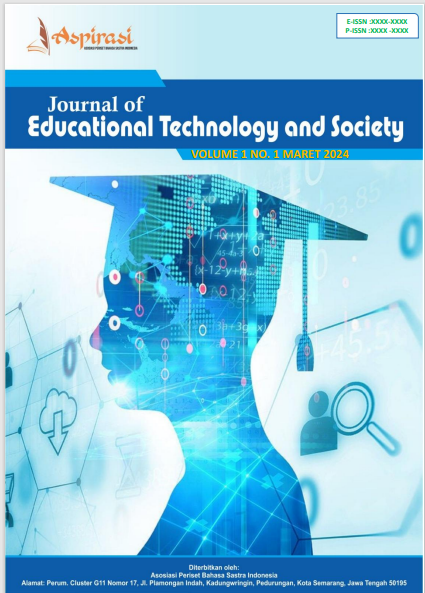Enhancing English Language Skills For Multimodal Transportation Professionals: A Curriculum Development Approach
DOI:
https://doi.org/10.61132/ijets.v1i2.37Keywords:
English Language Education, Multimodal Transportation, Curriculum Development, Language Skills, Transportation IndustryAbstract
This research explores the development and evaluation of a specialised English language curriculum for students in the field of multimodal transportation. Through qualitative analysis involving 100 cadets, the study identifies the specific language skills essential for success in this dynamic industry, including speaking, listening, reading, and writing. Based on these findings, a curriculum is designed to enhance students' proficiency and confidence in using English for various transportation-related tasks. The curriculum incorporates industry-relevant content and interactive instructional methods, such as role-plays and simulations, to provide students with practical skills applicable to real-world transportation scenarios. Pre- and post-curriculum assessments, along with feedback from students and instructors, demonstrate a significant improvement in students' language proficiency and confidence after completing the curriculum. The study also analyses the implications of English Language Teaching (ELT) and English for Specific Purposes (ESP) linguistics in designing a curriculum tailored to the needs of multimodal transportation professionals. The research contributes to the advancement of English language education within the transportation sector, offering insights for curriculum development and improvement.
References
Bruton, M. J. (2021). Introduction to transportation planning. Routledge.
Cascetta, E. (2013). Transportation systems engineering: theory and methods (Vol. 49). Springer Science & Business Media.
Darlington, Y., & Scott, D. (2020). Qualitative research in practice: Stories from the field. Routledge.
Docherty, I., Marsden, G., & Anable, J. (2018). The governance of smart mobility. Transportation Research Part A: Policy and Practice, 115, 114–125.
Goetz, A. R., Jonas, A. E. G., & Brady, S. (2016). Innovative approaches to improved intermodal transportation infrastructure funding and financing through public-private partnerships: A Denver case study. Mississippi State University. National Center for Intermodal Transportation ….
Höllerer, M. A., Daudigeos, T., & Jancsary, D. (2017). Multimodality, meaning, and institutions. Emerald Publishing Limited.
Hui, Z., & Ishak, N. A. B. (2022). A Review of Maritime English Teaching Curriculum in China. Journal of Research in Educational Sciences, 13(15), 5–12.
Katz, J. (2015). A theory of qualitative methodology: The social system of analytic fieldwork. Méthod (e) s: African Review of Social Sciences Methodology, 1(1–2), 131–146.
Litman, T. (2017). Evaluating transportation equity. Victoria Transport Policy Institute Victoria, BC, Canada.
Sari, L. I., & Sari, R. H. (2020). Exploring English language needs of Indonesian marine pilots: a need analysis and its implications in ESP classrooms. TransNav, International Journal on Marine Navigation and Safety Od Sea Transportation, 14(4), 909–917.
Schiller, P. L., & Kenworthy, J. (2017). An introduction to sustainable transportation: Policy, planning and implementation. Routledge.
Stanivuk, T., Stazić, L., Vidović, F., & Čobanov, A. (2020). Ship planned maintenance system data analysis. International Journal for Traffic and Transport Engineering, 10(4), 432–436.
Villani, C. (2021). Topics in optimal transportation (Vol. 58). American Mathematical Soc.
Vuchic, V. (2017). Transportation for livable cities. Routledge.
Willig, C. (2014). Interpretation and analysis. The SAGE Handbook of Qualitative Data Analysis, 481.
Downloads
Published
How to Cite
Issue
Section
License
Copyright (c) 2024 International Journal of Educational Technology and Society

This work is licensed under a Creative Commons Attribution-ShareAlike 4.0 International License.





